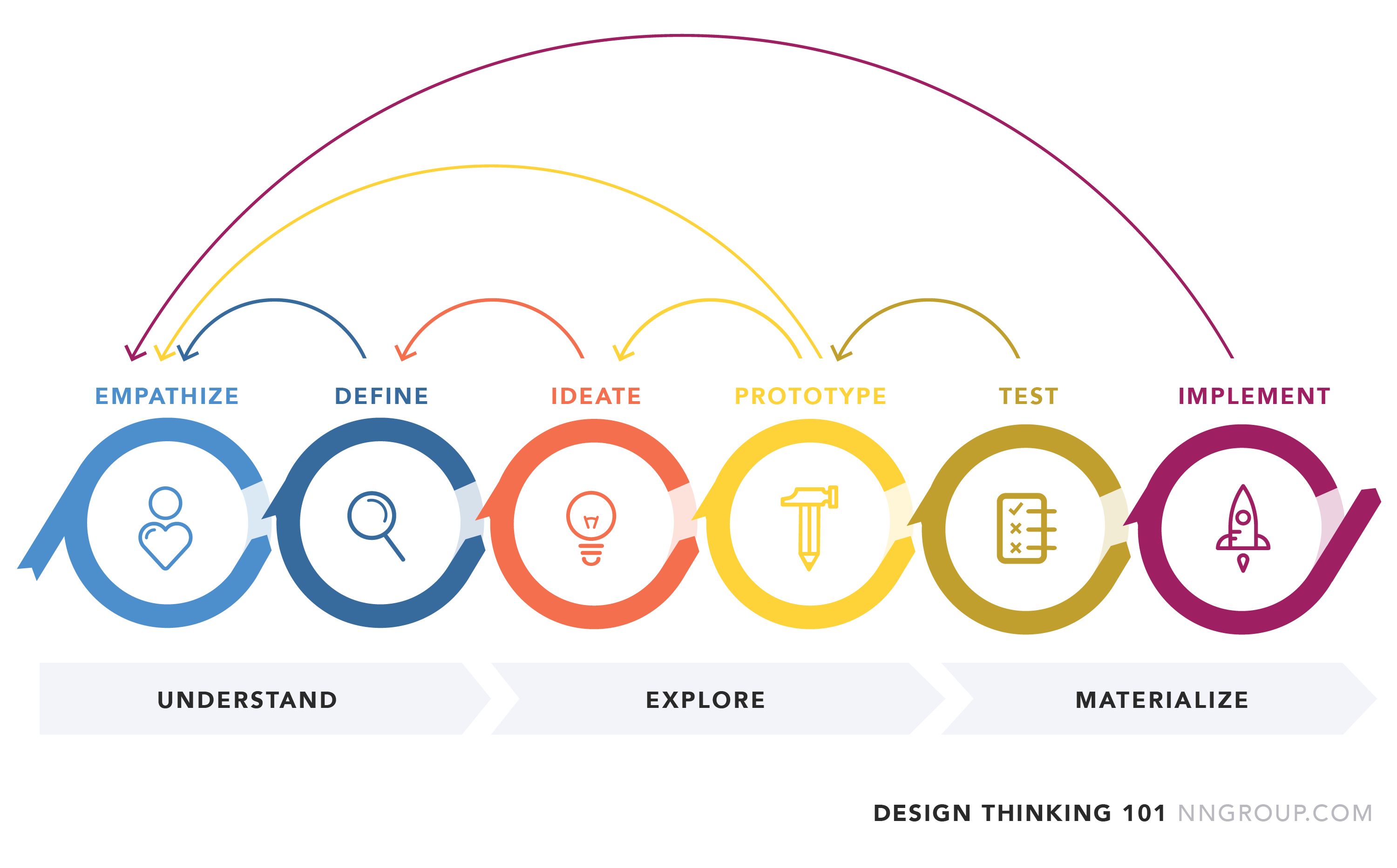7
LearnINN Playlist - Innovation in Youth Work
LearnINN Playlist - Innovation in Youth Work
Sadržaj
This Learning Playlist guides you through the key steps of the Design Thinking process:
- Empathise
- Define
- Ideate
- Prototype
- Test
It is framed within the context of youth work and innovation.
As you progress through the activities, you will explore how a Human-centred design, digital tools, and creative collaboration can help tackle real challenges in your work.
Completing this playlist and collecting at least 4 thematic badges will earn you the final recognition badge for your active learning about innovation development in the field of youth work.
The total learning time is 30 hours, consisting of individual and group learning both in-person and online.
Learning and digital open badges earned in this learning playlist are aligned with the ETS competence model for youth workers (https://europeantrainingstrategy.eu/yocomo/), as well as the EntreComp competence framework (https://joint-research-centre.ec.europa.eu/entrecomp-entrepreneurship-competence-framework_en) and the ESCO database (https://esco.ec.europa.eu/en).
This Learning Playlist is part of the KA2 Cooperation Partnership project Learn INN, supported by the European Union’s Erasmus+ programme.

Aktivnosti koje treba dovršiti
Obavite sledeće aktivnosti, steknite značke znanja i videćete da se napredak vaše plejliste ažurira
Sadržaj
Human-Centered Design Thinking is a creative and collaborative approach to problem-solving that starts with people. It encourages us to deeply understand the needs, hopes, and challenges of the individuals we are working with – in this case, young people.
Rather than jumping to solutions, this method invites us to ask questions, listen, empathise, and co-create ideas that truly matter. It has five main stages: Empathise, Define, Ideate, Prototype, and Test – though they don’t always follow a strict order. Depending on the design school, these phases might be called differently. In some cases it has few more stages.

For example IDEO agency, famous for it's Human-Centred design work introduces more granular steps around the same flow: Frame a Question - Gather Inspiration - Synthesize for Action - Generate Ideas - Make Ideas Tangible - Test to Learn - Share a Story.

In youth work and non-formal education, Human-Centred Design empowers us to:
• Engage young people as partners, not just participants.
• Develop programmes, tools, and solutions that respond to real needs.
• Build creative confidence and collaborative spirit in the process.
In this activity, you’ll explore the Empathise phase – a cornerstone of human-centred thinking that helps uncover insights through listening and observation.
Read more about specific aspects of Human-centered Design thinking, focusing on the Empathise and Define phases.
Watch: Design Thinking Process in a simple animated explainer video
3. Share Your Insights
Post one insight or unexpected discovery from your empathy map.
Reflect: How did this change your understanding of the challenge? How might it influence a youth-focused solution?
Resursi
Preuzmi značku znanja aktivnosti
Human-Centred Design Thinker Preuzmi ovu značku znanja
I earned this badge by exploring the Human-Centred Design Thinking approach and practising empathy mapping to understand the needs and experiences of others. I engaged in meaningful conversations, listened deeply, and helped build a shared understanding of real challenges youth workers face. This experience strengthened my ability to approach innovation with empathy, curiosity, and reflection.
This badge is part of the KA2 Cooperation Partnership project Learn INN, supported by the European Union’s Erasmus+ programme.
Zadaci
Zadatak broj1
Dokaz verifikovan od strane: jedan/na organizator/ka aktivnosti
Share one insight or moment from your ‘empathy’ phase work that helped you better understand a real need or challenge in your organisation.
(You can write your response or upload an image with a short comment.)
Veštine
ESCO
#innovate
ETS-TR
#Choose and designing appropriate methods for collecting, interpreting and disseminating information (data, resources, findings, etc.)
ETS-TR
#Where applicable, includes the community’s needs in the programme design
ESCO
#demonstrate empathy
#Cilja postizanje obrazovnih ciljeva korišćenjem specifičnih načina i metoda koji podstiču kreativnost, rešavanje problema, razmišljanje "izvan uobičajenih okvira", u različitim okruženjima
ETS-TR
#Facilitates problem solving
#Cilja postizanje obrazovnih ciljeva korišćenjem specifičnih načina i metoda koji podstiču kreativnost, rešavanje problema, razmišljanje "izvan uobičajenih okvira", u različitim okruženjima
ETS-TR
#Enables participants to be creative and think out of the box
ESCO
#brainstorming ideas
#Otvorenost za korišćenje različitih načina i metoda radi podsticanja kreativnosti, rešavanja problema i razmišljanja "izvan uobičajenih okvira"
ETS-TR
#Understands the impact of Artificial Intelligence on choosing learning objectives when using online platforms for learning
ESCO
#innovate
ESCO
#build craft prototypes
#Cilja postizanje obrazovnih ciljeva korišćenjem specifičnih načina i metoda koji podstiču kreativnost, rešavanje problema, razmišljanje "izvan uobičajenih okvira", u različitim okruženjima
Aktivnosti: 5
Započeto: 23
Završena plejlista: 23
Vreme za završetak: 13 sati 30 minuta
Podelite :
Organizatori
Awero
Badge issuer recognized with
Badgecraft drži i razvija ovu platformu sa vodećim obrazovnim organizacijama. Program Evropske unije Erasmus+ odobrio je sufinansiranje za izradu prve verzije ove platforme. Kontaktirajte support@badgecraft.eu.
Platforma
Promenite na drugi jezik:

